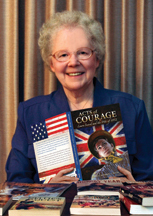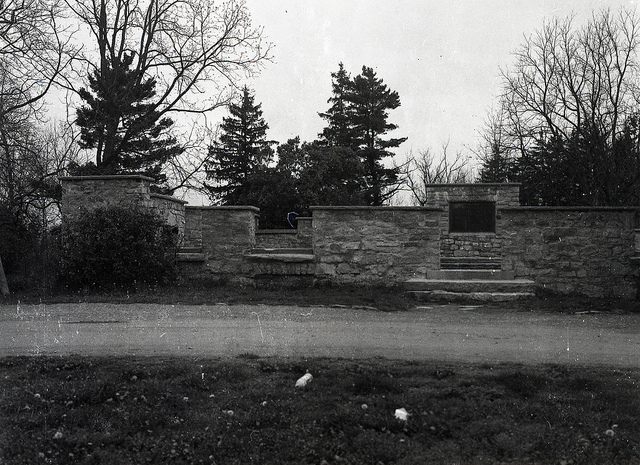 Connie Brummel Crook is the author of fifteen picture books and novels of historical fiction. Her most recent, Acts of Courage: Laura Secord and the War of 1812, tells the story of Laura Ingersoll Secord, one of the most celebrated (and sometimes controversial) figures in Canadian history. Today Connie shares what it was like to recreate the story—and the personality—of this courageous woman.
Connie Brummel Crook is the author of fifteen picture books and novels of historical fiction. Her most recent, Acts of Courage: Laura Secord and the War of 1812, tells the story of Laura Ingersoll Secord, one of the most celebrated (and sometimes controversial) figures in Canadian history. Today Connie shares what it was like to recreate the story—and the personality—of this courageous woman.
I heard tales of Laura Secord’s heroism as a child. My parents were descended from Loyalists. My great grandfather lived with us when I was a very young child, and he sang old ballads about those days. All his songs had a story to tell. My father, too, was interested in history. I grew up with the stories about which I have written. Of course, I did do a lot of research to fill in details that I did not know or remember as a child.
I have drawn Laura’s adult character from historical sources and her youthful character partly from an interview over a pleasant lunch prepared for me and my husband by Laura Secord Dunlop, an 89-year-old lady, in the early 1990’s at Kitchener, ON. Mrs. Dunlop’s father had told her much about Laura and he, too, had lived a long life, and so could remember back directly.
Since I could not find much that had been written about Laura’s early years before she came to Upper Canada, I asked Mrs. Dunlop about Laura’a childhood. She mentioned that Laura went through a most difficult time when her father, Thomas Ingersoll, married again so soon after her stepmother’s death. After all, Laura’s own mother died when Laura was eight, then her step-mother, to whom she was adjusting nicely, died four years later. Then four months after her death, Thomas Ingersoll married yet again. From Mrs. Dunlop’s comments, it appeared to me that Laura was a strong, determined child at a time when one might think she would have been more fragile.
I began to investigate that time period in the States. Thomas Ingersoll, who had fought for the Americans in the American Revolutionary War, was then caught into subduing the rebels of Shay’s Rebellion. So I worked that suspenseful event into my story with Laura involved. The fact that a school teacher from a nearby school was actually killed led me to work in the school events to introduce this part of my story. Also, when I was researching, I found out that around 1990, the house that had originally been Laura Secord’s home was, in fact, the library of Great Barrington. So I phoned them for details of the land, house, area, etc. from that earlier time period. A few years later I was contacted by someone working in the archival materials in that library to give them my Canadian spin on some events up here. I don’t know if they ever used it.

The ruins of the De Cew house; photo by Alex Luyckx
Over twenty years ago, I was asked by a publisher to write a novel about Laura Secord. So I read every book, article, scrap, letter etc. that I could find. I visited Niagara Falls area, where my first cousin lived, and so I was free to explore. In fact, I walked and rode (my husband beside me in the car) over her long trek as much as I could. Some places were hard to find, and many were changed. The De Cew house was only partially preserved, with the stone parts of basement coming up above the soil. Also, I spent a great deal of time at the Public Library. They would not allow me to take out the personal file of letters and such, but they gave me space to work there with these precious files. The more I read, the more I became impressed with the way Laura handled difficult times—not all of which fit into my story about the War of 1812.

Monument to Laura Secord’ photo by Alex Luykcx
In a published source, I found another courageous deed described. After the war, when James was on duty at the Customs, where he had a more prosperous job than his own business had ever been, he heard rumours about an expected attack from smugglers. There was no time to bring in help, and so Laura dressed as a man and took duty with him. The camouflage helped to show there was more than one man there. The ruse worked and the smugglers did not attack because they assumed the plan was found out and probably the police were in waiting for them. Why else would a man be brought in on short notice to accompany the lone Customs Officer, James Secord, who had walked with a limp ever since the war? Laura’s courage even in these later years stood out. Nor did she mind impersonating a man to do the task. Was she not exceptional for her time?
Though I always try to write an exciting story, it is just as important to write something accurate enough that the subject of the book would also enjoy reading it. I hope that Laura Secord would find her life honoured and accurately reflected in the books that I have written.

